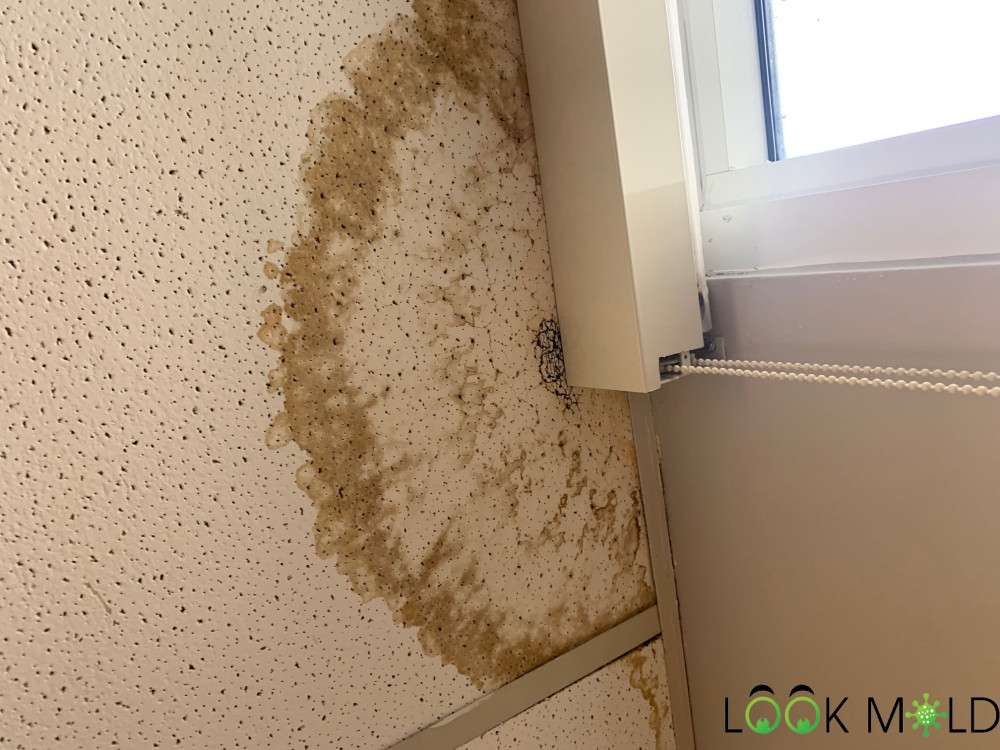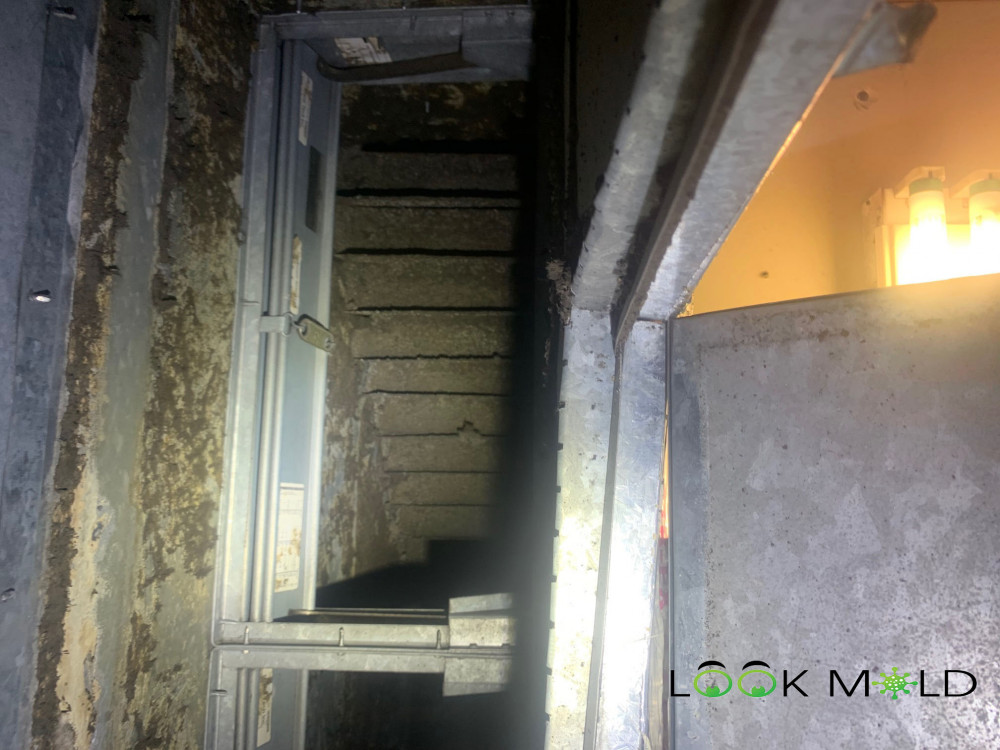Mold In The Workplace
If you are having symptoms of possible mold exposure, it may force your hand to spend a pretty penny on a mold inspection in your home.
But what if the mold is not in your home? What if your problem is mold in the workplace?
Many office buildings are more susceptible to mold growth than residential homes due to many factors such as poor building management /maintenance and insufficient building systems such as insulation and ventilation.

Is Mold Present In Every Workplace?
Mold is present naturally in just about every environment, workplace, or home. It is rare to find an indoor environment with no mold whatsoever.
Most species of mold that are found in an indoor environment commonly won’t harm people.
The type of mold that needs remediation is when the mold off-gasses something called mycotoxins. Mycotoxins are what get people sick, not the mold itself.
The type of mold that can produce mycotoxins is usually brought about by water damage or moisture issues in the building.

Reasons Why Mold In The Workplace Can Be Common
Lack Of Education/Building Maintenance
Many office buildings are leased and not owner-occupied. The problem with that is tenants do not typically take care of the property as well as an owner would. Therefore, the building isn’t maintained as well when the tenant manages the property themselves.
Smart landlords know this. That is why many commercial buildings may put in a maintenance crew. While this is great, the landlord is proactive; quite often, maintenance crews are not properly educated to deal with water damage and mold.
Property managers are part of the “throw bleach on mold” crowd, which is not the proper solution to deal with a mold problem.
Neglect
While their training may limit many maintenance personnel in a commercial building, there are times where they also have their hands tied by the owner of the building.
Suppose a good property management company knows what needs to be done to resolve a mold issue in a building, If they don’t have a client that’s willing to pay for mold remediation there is not much that can be done.
Or should I say not much to be done the correct way.
This can lead to mold issues multiplying and possibly leading to black mold, aka Stachybotrys. Black mold in the workplace is never a good thing!
HVAC Maintenance
Maintaining a clean air-conditioning system in an office requires more time requirements than in homes. The reason for this is because there is more foot traffic in a commercial building than in residential homes. This leads to more dust, dirt, and debris, and those are three things mold can commonly start to grow within an HVAC system and ductwork. It accumulates much quicker because of the building activity.
If you add an HVAC system (Including both the air handler and the ductwork) that is not routinely cleaned, you can be looking at an indoor air quality issue within the building.
Even in office buildings where the property manager is mindful of mold in the air conditioning system, there are areas such as the return plenum, which are often forgotten.
Building Design
The way office buildings are designed sometimes does not really take into account air quality. This fact is especially actual in older buildings.
Many office buildings have the same design:
The office area
Then drop down ceiling panels usually made of some particle board or fiberglass.
And then the rafters were depending on the building insulation, the air conditioning, and ductwork along with the roofline.
This building design, by itself, is not a problem. The problem is when it’s not maintained correctly. Overtime is flimsy ceiling tiles can get damaged (mostly due to leak issues) or become damaged. Holes will be present or, in some cases, ceiling panels completely missing.
This can cause unconditioned air from the rafters to enter the building space. This can not only lead to humidity issues because the HVAC system is now working harder to try and pull moisture from the unconditioned space.
But that’s not the only problem. The HVAC system can also be pulling in particles from the area above the ceiling tiles. Mold is not the only concern. Other types of particles can include:
-fiberglass from the insulation -rodent droppings

What To Do If You Suspect Mold In The Workplace
If can be very discouraging if you have the type of landlord or property manager that doesn’t take mold serious or is not competent.
While your options are limited, there are a few ways to go about mold in the office:
1. Ensure All Water Damaged Ceiling Panels Are Replaced
If you are a tenant, spending your own money to replace the ceiling panels is not ideal. Fortunately, they are not that expensive. So if you have a handful of ceiling panels that are damaged, fighting with the landlord may not be as useful as spending the money to fix it.
2. Log Every Incident of Water Damage
Water is the key to mold growth, which means if you have a leak that isn’t dried properly and timely, the chances of mold growth are significant. To force any legal action to force the landlord’s hand, you need to provide proof. Providing picture documentation and logging all information could help if you decide to contact an attorney.
3. Keep The Place As Clean As Possible
Current mold problems are one thing, but often the problem may derive from a mold problem from previous water damage that was not cleaned up properly. The mold spores or fragments may be in the settled dust in various areas of the office.
4. Maintain The Air Conditioning System
Whether you or the landlord maintains the air conditioner is entirely determined what is agreed upon when the lease is signed. If you, as a tenant, is responsible, you must take that responsibility seriously. The air handlers, ducts, plenums, and any other components of the air conditioning system need to be regularly checked by an HVAC company. If cleaning is necessary, it should be done. Air filters should be changed every 30-60 days in an office.
The National Institute for Occupational Safety and Health put together a full list of recommended steps to take, which can also help.
Conclusion
If you suspect you are having mold-related symptoms, don’t be so sure they originated in your home. Mold in the workplace can be frequent and could be the source of your discomfort. When in doubt, it’s always best to have the place inspected for mold by a licensed professional.
Even if it costs money, it’s the health of you and your co-workers, and that is priceless.
